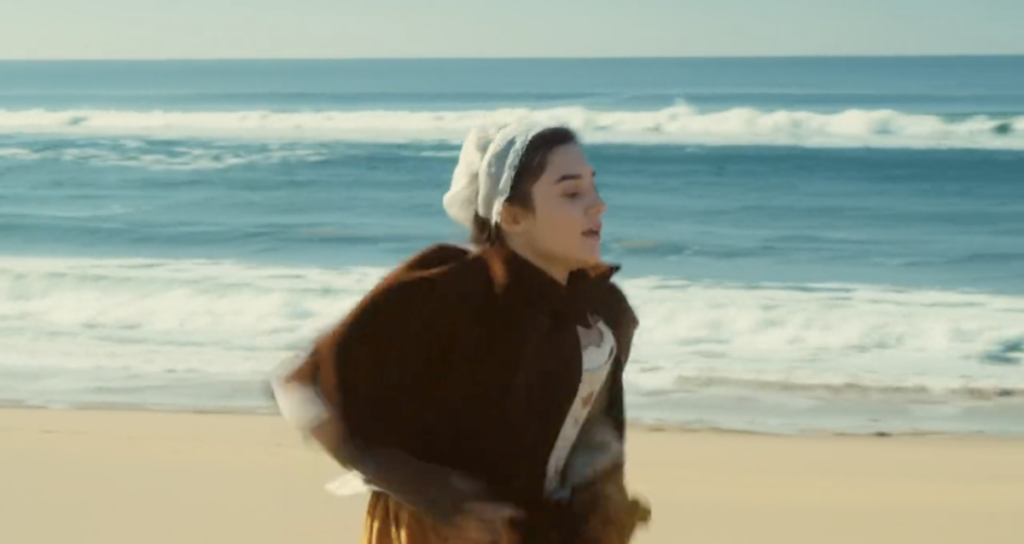When I was watching the film, I was impressed by the tonality of the film, especially the use of bright colors like oil painting, where natural scenery is filmed particularly mild and alive. There are plenty of scenes that the director focused on shooting the sea, but no matter under what condition, in what weather, at what time, the sea is always performed in a calm and smooth way, with little spindrift shining under sunlight. To attain the warm tone of oil-painting and smooth texture, the director may post-produce the film by adjusting the colors to higher saturation, especially the warm-tones on the spectrum. She manages to balance the exposure so that the overall contrast of lights shot on objects is not obvious and clearly-separated, thus increasing visual beauty while watching.


However, I believe that this lovely representation of the scenery has more significant meaning than simply being a plot device used to add beauty. Unlike the traditional male gaze of the sea in films, which is more oriented towards the vastness and danger of its nature, and is waiting to be conquered, the sea under female gaze is calm, radiant and enchanting. It reveals the softness and inclusiveness of the female perspective as well as how much more they are able to observe beauty in daily life when they are freed from the shackles of male gaze. It may also be a symbol of protection and isolation for female characters away from reality, which is full of male gaze. In the female protagonists’ eyes, the island can be an Utopia that is wrapped in a sea of tenderness, constructed to give them a break from the real world. All they experienced on the island is an established fantasy world that finally vanished at the end, and the only things left for Marianne are several paintings, including the sea painting that first emerged at the beginning of the film, resembling her inner peace and where she belongs.